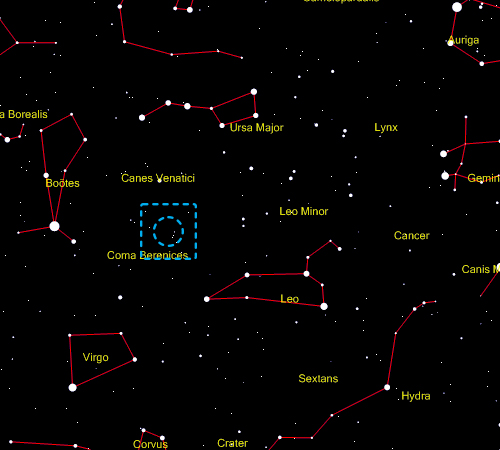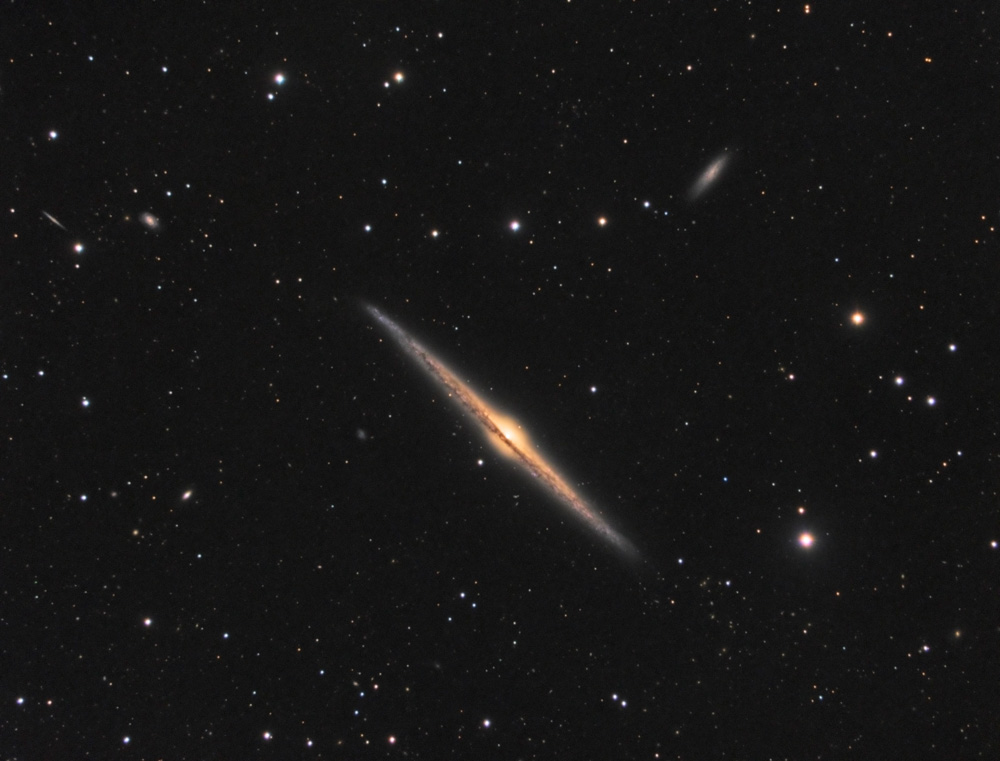The Needle Galaxy is a giant spiral galaxy located in the constellation of Coma Berenices and is one of brightest members of Coma I galaxy cloud, containing about 206 galaxies.
First spotted in 1785 by William Herschel, it is classed as a SA(s) b galaxy, however some say it might be barred. Recent observations with the Spizer infra-red satellite (which also confirmed a pseudo bulge - disk shaped bulge) and radio observations appear to confirm this classification. Its exponential shape may also suggest the galaxy is in fact barred. There is a debate about this because the galaxy is near edge on to the Earth, so any bar is not obviously visible.
The galaxy is thought to contain around 240 globular clusters (this is disputed; however, the Astronomical Journal uses data from the Hubble space telescope from 1999 saying the number is between 204 and 238, so it is most likely the numbers have increased a little since then). Globular clusters in edge on galaxies are more visible because the clusters stick out from the galactic plane.
There is a bright yellow central bulge, with a box like nucleus (thought to be a sign of the bar) appearing to interact with one of its neighbours, possible NGC 4562. NGC 4565 has at least two companion galaxies, with another that is obviously interacting with it being irregular galaxy IC 3571. It is thought that this interaction is via a bridge of HI gas, maybe where there is a warp in the galaxy reminiscent of a neutral hydrogen line (HI) warp. There is also a warp in the same point in the diffuse radio halo found around the galaxy, and this is how the warp was originally discovered. The radio halo is usually observed in spiral, late type, edge on galaxies. There is also warping of the edges of the spiral galaxy, most likely from an encounter with NGC 4562 300 million years ago.
Some say it is more luminous than the Andromeda galaxy. NGC 4565 is more luminous by 0.37 which is only a very small amount. Therefore, using another source or taking a different measurement may result in a smaller difference between the two luminosities. However, I still think that there is a large enough difference between luminosities to confirm that the Needle Galaxy is more luminous than the Andromeda Galaxy.
The Needle Galaxy is 1/3 larger than the Milky Way, however it has similarities to the Milky Way: each have dark ribbons of interstellar dust blocking some light pouring out of galactic core (dust lanes). Many astronomers believe this galaxy to be very similar to what our galaxy would look like viewed edge on.
There is a low star formation rate, as the galaxy had an intense period of star formation previously. Two ultra-luminous x-ray sources are thought to have been identified in the galaxy, says The Astrophysics Journal, one coming probably from a globular cluster in the galaxy. However, this seems to be the only source investigating this.
NGC 4565 is said to be one of, if not the greatest night sky object to be missed by Messier. |


